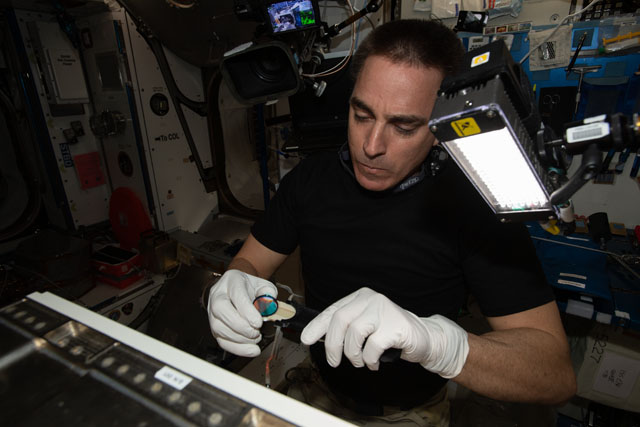Studies on the Human Condition Take Flight Along With Piloting Investigation

Expedition 63 Commander Chris Cassidy of NASA and Russian cosmonauts Anatoly Ivanishin and Ivan Vagner spent a full day after the holiday weekend on investigations that will help demystify the effects of space on the human body, as well as some routine maintenance tasks to ensure the health of the International Space Station — now in its 20th year supporting crews in space.
In the JAXA (Japan Aerospace Exploration Agency) Kibo laboratory module, Cassidy spent the first part of his Tuesday with Aquatic Habitat, a unique closed-water circulatory aquarium capable of accommodating small freshwater fish such as medaka or zebrafish, which serve as ideal subjects in the study of vertebrates. The station commander performed lens collection for the Confocal Space Microscopy setup and closeout, helping to maintain the microscope capable of providing fluorescence images of biological samples that inform scientists on the ground about the fundamental nature of cellular and tissue structure and functions. Cassidy later used the Biomolecule Sequencer for Genes in Space 6, which evaluates how exposure to radiation affects the long-term health of astronauts. The investigation, part of a series, will aid in finding the optimal DNA repair mechanisms that cells use in microgravity.
Meanwhile, on the Russian segment, Ivanishin furthered understanding in how the heart performs during long-duration spaceflight by setting up, and then wearing, an electrocardiogram for a 24-hour period. The crew member also wiped down instrumentation during routine maintenance and configured Earth-observation hardware to capture changes in the planet below.
Vagner, too, did some housekeeping for the outpost, performing transfers to Progress 75 cargo ship tanks in anticipation of its deorbit in Earth’s atmosphere sometime in December. The cosmonaut also focused on the Pilot-T piloting spacecraft and robots study, which uses a mathematical assessment model to develop recommendations and improve the training for cosmonauts expected to perform complicated operator tasks such as docking or flying spacecraft.
from Space Station https://ift.tt/3k2NEV5
Comments
Post a Comment